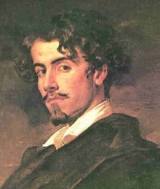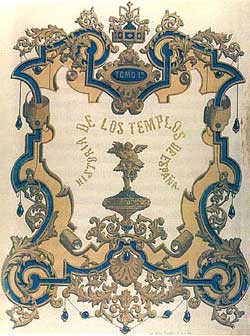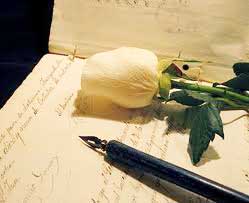Life & works of Gustavo Adolfo Bécquer
The second half of the 19th century is marked by the Post-romanticism movement, of which Bécquer is the main writer. Post-romanticism poetry is more intimate and emotional, and it's influenced by german poetry (specifically Heinrich Heine) and the new interest in Spanish folkloric poetry. Narrative falls in favor of poetry, and there's less rhetoric and more lyricism, with the mains topics being love, passion and beauty. The homogeneity present in Romanticism is forgotten, and Post-romanticism acts as the transition between Romanticism and Realism.
Gustavo Adolfo Bécquer - Life and Works

Gustavo Adolfo Bécquer was born in Seville in 1836. His father was a painter, and his side of the family came from a Flemish aristocratic family, who settled in Andalusia during the 16th century. Bécquer had a brother, Valeriano, and both of them were influenced by his father to take up painting. However, Bécquer's father died when he was only 5. At 10 he entered the "Colegio de Náutica de San Telmo" (Nautical School of San Telmo), in Seville, where his teacher is a disciple of Alberto Lista, Francisco Rodríguez Zapata. During his time at the school in Seville he meets his best friend, Narciso Campillo. In 1847, Becquers mother dies, making Valeriano and him orphans, but their aunt María Bastida takes them in.
The Nautical School shut down and Bécquer didn't quite know what to do with his life. He moved in with his godmother, Manuela Monahay, who was quite wealthy and had a good library. During his stay there, Bécquer became an avid reader. He started his painting studies in the one of his uncle's workshops, but he convinced him to take up his studies and paid for his Latin courses.
Bécquer moved to Madrid in 1854 with the wish of becoming a great writer, but things didn't go as planned and he's left feeling quite disappointed. However, he perseveres and writes for a living, mostly comedies and zarzuelas. These works he signs as Gustavo García, and in them he satirizes the bourgeois lifestyle in Madrid.

In 1857 he's infected with tuberculosis, an illness which will accompany him until his death. At this time he was working in the "Dirección de Bienes Nacionales", but it's said he lost his job when his boss caught him drawing. His pessimism keeps growing, and only with the help of his patroness and his brother is he able to overcome it. It's also during this year when he takes up an ambitious project about Spanish Christian art, combining religious ideals, architecture, and history. However, only the first volume of this would ever be published, under the name "Historia de los Templos de España".
In 1858 he met Josefa Espín, and through her he met her sister, the opera singer Julia Espín, who'd later become his muse. Bécquer fell in love but the relationship never occurred because she'd had an upper-class upbringing and wasn't happy with Bécquer's bohemian lifestyle. He would later fall in love with Elisa Guillén, but she grew tired of him and left him.
In 1860 he published "Cartas literarias a una mujer" (Literary letters to a woman), and in the house of the doctor who treated him he met the woman who'd become his wife, Casta Esteban Navarro. They got married in 1861. Bécquer started writing in a newspaper called "El Contemporáneo", mainly political and literary chronicles. With the money he earned there until its closing, in 1865, he managed to scrape enough to live with his wife. His first son is born in 1862, when the couple lived in Soria, where Casta's family had some lands. After the birth of his son Bécquer started writing more frequently to support his small family, and during this time were born many of his best works.
In 1836 her moves back to Seville were he works with Valeriano. In 1864 he moves back to Madrid where he works as a novel censor. 1868 is a dark year for the Spanish poet. His wife is unfaithful and he moves back and forth from Toledo until 1870, when he moved back to Madrid to direct "La Ilustración de Madrid", but the death of his brother plunges him into a state of deep depression. His tuberculosis worsens and he dies in December of 1870.

Bécquer's literary fame is mostly based on his "Rimas" (Rhymes), which started the intimate poetry movement inspired in Heine, and opposed to the rhetoric of the previous romantic writers. This is why his works weren't very appreciated at the beginning, however, they were better accepted as time passed. His "Rimas" are composed of approximately 86 poems, but most of them were published the first time after his death by some friends. By their content, these poems can be divided into 4 groups: the first is a reflection on poetry and literary creation; the second talks about love and their effects on the writer's soul; the third approached subjects like the disappointment and disillusion caused by love; the fourth and last shows the poet in his fight against death, dismayed with love and the world.
His prose is also simple and easy to understand, like his poetry. "Leyendas" was written in the style of E.A.Poe, and they recreate fantastic and mysterious settings. Most of his prose works have a fantasy plot, like " La Corza blanca", where the main characters is a woman who at night turns into roe deer.

